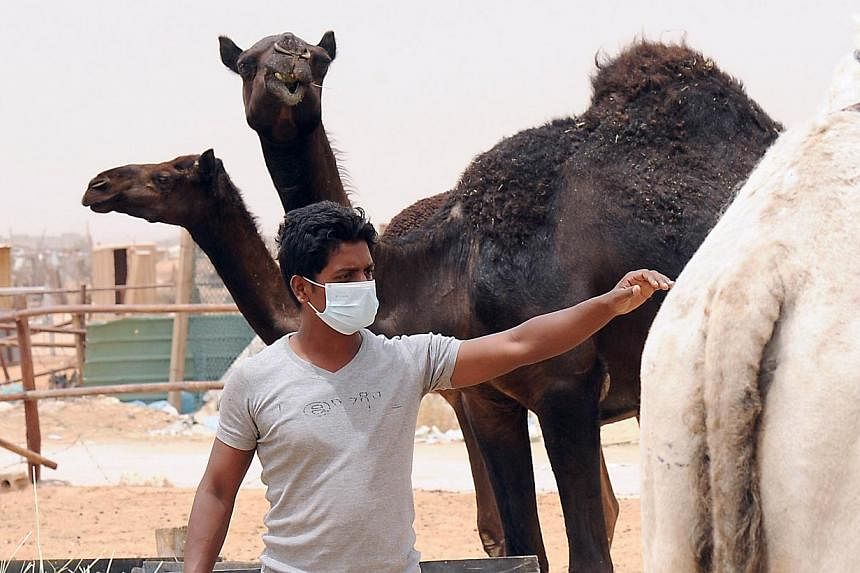After an emergency meeting recently, the World Health Organisation (WHO) is urging countries to be more vigilant against the Middle East respiratory syndrome (Mers) coronavirus.
More than 500 confirmed Mers cases are all connected to the Middle East, and the virus has been exported to several countries.
The world health agency became more concerned after April saw a spike of 288 Mers cases compared to 207 confirmed cases from March 2012 - when Mers first emerged - up to March this year. In Jeddah, there were 135 cases in April alone, compared to just four in the previous two years.
However, WHO says an epidemic is not yet imminent.
That means the recent surge in cases does not indicate that the virus has mutated into a form more transmissible from person to person. The uptick is probably a seasonal increase in the number of primary cases, it says.
These are people infected with Mers from animals, likely camels which themselves were likely to have been infected by bats.
The seasonal increase may be related, in this instance, to the movement of large numbers of camels both to and from Saudi Arabia's Hafr Al-Batin region for a large annual camel fair.
But this seasonal increase in primary cases of animals infecting humans may be further amplified when patients then infect health-care workers - if hospitals are slack in their infection prevention and control measures.
Still, within the community at large, Mers is not being transmitted rapidly from person to person for now.
Following lessons learned during the severe acute respiratory syndrome (Sars) crisis, the scientific community has worked together to develop the tools to sequence and track the evolving virus, so Mers diagnostic kits are already available.
The scientific community is also largely sharing the viral DNA sequences on the Internet.
Based on these sequences, some scientists think human-to-human transmission may have increased, contrary to WHO assurances.
They note that the virus isolated from six patients of four hospitals in two cities - Jeddah and Mecca - in April had matching DNA sequences, which also matched three earlier cases from Jeddah. The similarities, they think, suggest primary infections that are human-to-human, not camel-to-human.
Other experts counter that the viral DNA sequences' coding for what is known as the spike protein - the part of the virus that binds to human cells and enables it to infect people - have shown no mutations in all available specimens so far.
In fact, the rest of the virus genome has also changed little from that isolated from the world's first case in 2012. Overall, then, the virus genome is still stable.
Genomics aside, scientists are also mathematically modelling the situation using available epidemiological data about the cases and all their human contacts.
A virus' epidemic potential is measured by the average number of humans infected (secondary cases) by one human case (the index case).
This measure is called its reproduction number (R). If R is below one - that is, on average, each index case is spreading to fewer than one person - the virus is unlikely to cause an epidemic.
But if R exceeds 1, cases could grow to cause an epidemic.
Modelling by most experts finds the R for Mers to be presently under 1, at say, 0·69, in the current pre-pandemic stage.
On a study trip to Saudi Arabia in late April, scientists from the European Centre for Disease Prevention and Control looked at 26 index cases and 280 close contacts, of whom only nine were confirmed to be infected. It reckons that this means an R of just 0.3.
These figures apart, how much like Sars will Mers be?
Though both are coronaviruses, they differ in their biology. For example, their spike proteins latch on to different receptors in human cells.
While Sars took only months to adapt its spike protein to human cells, Mers has been circulating for two years among humans without doing so.
In that time, it has not yet mutated into a pandemic form.
Why? The rate of mutation depends on many variables that may differ between China and Saudi Arabia. These include the different animal hosts involved (from bats to civet cats to humans in Sars but, most likely, from bats to camels to humans in Mers) and population density.
Also critical is political willingness to be forthcoming about an epidemic, which affects the timeliness in taking baseline preventive measures.
Then there is the R before the pandemic actually begins.
For Sars in 2002, it was 0·8. It is lower for Mers at present, approximately 0.3 to 0.69 by some estimates.
But because far fewer Mers virus samples have been sequenced and shared on the Internet than Sars, whether the virus has already adapted to human beings yet can't be ruled out.
Since their mutation rates and pre-pandemic R clearly differ, any comparison of Sars and Mers must be circumspect.
In what is potentially a public health emergency, the sharing of both epidemiological and genomic data is important.
During Sars, China initially hid the patients and refused to share epidemiological data and viral sequences on the Internet for scientists in other countries to study.
Saudi Arabia has been doing better. But already, there are signs of internal rivalry.
Dr Ziad Memish who is its assistant deputy health minister for preventive medicine, and an infectious disease specialist-cum-epidemiologist, has built up a lot of knowledge about Mers in the last two years, and developed a network of contacts that could make a difference in a pandemic.
But in recent weeks, he was left out of a new Mers advisory committee set up by Saudi health minister Adel Fakieh, a decision that raised eyebrows.
As China's experience with Sars shows, expert knowledge and politics must come together. The world would hope that internal politics do not result in an unnecessary gap in Saudi Arabia's defences against the virus.

